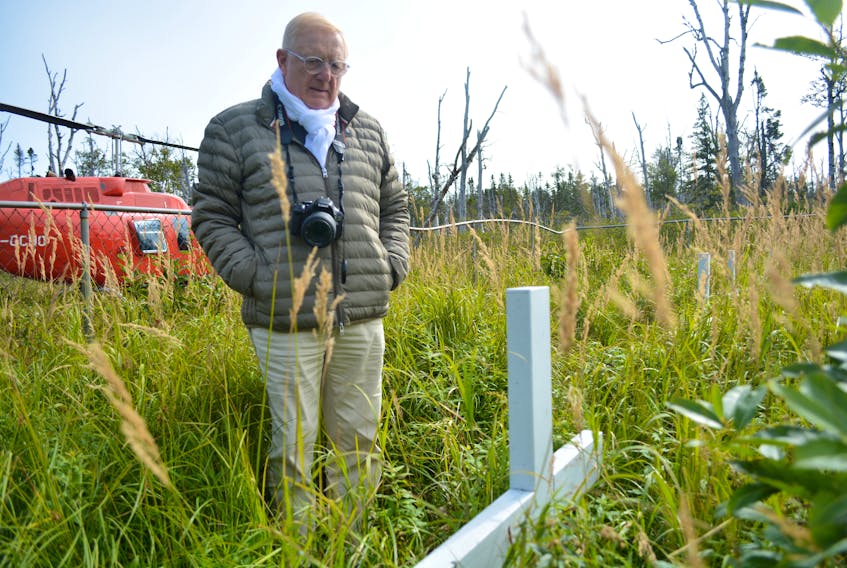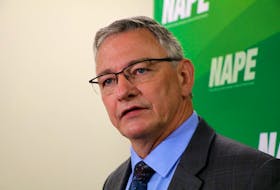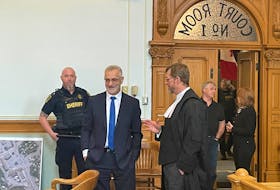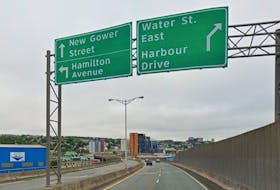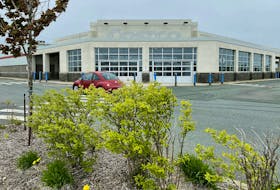Jacques Drossaert found his uncle Alfred on Wednesday, Sept. 11.
Stepping through a creaky gate on the outskirts of Gander, Jacques found his relative amidst the untouched grass and alders of the St. Martins-in-the-Woods cemetery, the crash site of the Sabena DC-4.

Partially obscured by a summer's worth of overgrowth, Alfred appeared to his nephew as a white cross with a black nameplate.
Peeling away the grass, Jacques stands and pauses briefly before alerting his wife, Marie, to his discovery.
Moments earlier, the pair had arrived at the site via helicopter from nearby Newfoundland Helicopter in Gleenwood.
Alfred was one 27 people killed in the 73-year-old crash. All but two graves are marked with a white cross. The other two have monuments that reflect their Jewish heritage.
“For me it was more moving than impressive,” the 80-year-old Jacques said of the crash site. “I wanted to search where the cross was and I have plenty of memories coming back of my uncle.”
Alfred was a Spitfire pilot in the Royal Air Force during the Second World War, later moving into the private sector at the conclusion of the conflict in 1945.
He was co-pilot on the Sabena DC-4 flight that originated from Brussels on Sept. 18, 1946 bound for New York.
The pilot was attempting to land in Gander during the early hours that day, and had lowered the plane’s altitude to fly below some adverse weather. The plane crashed into the forest.
“I remember my father bursting in and saying we hadn’t heard any news on Alfred,” said Jacques, who was seven years old when his uncle died in the crash.
He saw his uncle in Brussels, Belgium a week before the crash. He didn’t know then his goodbye would be his last.
The air is heavy and the area around the Sabena crash site is eerily quiet.
A monument stands among the shredded steel of the aircraft to commemorate those killed, the 17 who survived, and responders who braved the cold conditions to conduct the four-day rescue.

A propeller from the crash sits atop the monument. In recent years, it has become a form of guest book for visitors to the site as they have carved their names onto the blades.
Standing where the pilot’s cabin would have been, Jacques shakes his head and wonders aloud how the survivors could have lived the several days it took for rescuers to get to them.
In the months leading up to his visit, Jacques was nervous about making the visit. Chances were high he would be the first and last of his family to visit the grave site.
Boarding his flight in France, his nervousness grew until he landed in Newfoundland. Then, his unease disappeared.
The couple had planned to make the trip last year until circumstances postponed their journey.
Moving around the wreckage, Jacques stops at the monument and leans slightly forward.
Finding Alfred’s name, he raises his camera to his face and snaps a picture.
In that moment, he completes a circle with his uncle that began when Jacques was a young boy who looked up to him.
Many people attended the funeral in Brussels, but there was never a true sense of completion.
“I would have said goodbye at the time, but it is better today,” said Jacques.

